Coleus – Painted Leaves
Coleus, also known as Flame Nettle or Painted Leaves, is a popular ornamental plant admired for its vibrant and colourful foliage. With its wide range of leaf shapes and striking patterns, Coleus has become a favourite among gardeners and plant enthusiasts.
Origin and Taxonomy:
Coleus belongs to the genus Plectranthus and is native to tropical regions of Southeast Asia and Australia. It is a member of the Lamiaceae family, including mint and basil. The scientific name of the common garden coleus is Plectranthus scutellarioides, but it has undergone several taxonomic revisions over the years.
Leaf Characteristics:
The most striking feature of Coleus is its diverse array of leaf colours and patterns. The leaves come in various shapes, sizes, and textures, and they can display combinations of vibrant hues such as red, pink, purple, green, yellow, and orange. Some varieties have distinct patterns, including stripes, spots, and marbling.
Growth Habits:
Coleus is a fast-growing plant that can reach 1 to 3 feet (30 to 90 centimetres), depending on the variety. It has an upright growth habit with multiple branches. Some cultivars have a bushy form, while others trail or cascade, making them suitable for hanging baskets and containers.
Light Requirements:
Coleus thrives in partial shade or filtered sunlight. While it appreciates bright light, direct sun exposure can scorch its leaves and fade their vibrant colours. A location with morning sun or dappled shade throughout the day is ideal for optimal growth and foliage development.
Watering Needs:
Coleus prefers consistently moist soil but not waterlogged conditions. Water the plant when the top inch of the soil feels slightly dry. Ensure adequate drainage to prevent root rot. Avoid overwatering, as it can lead to wilting and other issues.
Soil Requirements:
Well-draining soil is crucial for the healthy growth of Coleus. Use a high-quality potting mix enriched with organic matter. The soil should retain moisture while allowing excess water to drain away. A pH level between 6 and 7 is generally suitable.
Temperature and Humidity:
Coleus thrives in warm temperatures ranging from 60°F to 75°F (15°C to 24°C). It appreciates moderate to high humidity levels, especially in indoor environments. Regular misting or placing the plant near a humidifier can help maintain adequate humidity levels.
Pruning and Maintenance:
Regular pruning is beneficial to encourage bushier growth and maintain the desired shape of the plant. Pinch back the tips of the stems to promote branching and prevent legginess. Remove dead, damaged, or yellowing leaves to maintain the plant’s health and appearance.
Propagation:
Coleus can be easily propagated from stem cuttings. Select healthy stems with several sets of leaves and remove the lower leaves. Place the cuttings in water or a well-draining potting mix until roots develop. Transplant the rooted cuttings into individual pots or the desired growing location.
Potential Pests and Diseases:
Coleus is generally resistant to pests and diseases but can occasionally attract aphids, mealybugs, or spider mites. Regularly inspect the plant for signs of infestation, and treat any issues promptly using organic or chemical pest control methods.
With its stunning foliage and easy cultivation, Coleus is a versatile plant that adds colour and visual interest to any garden or indoor space. Experiment with different cultivars, create striking combinations of colours and patterns and enjoy the beauty and vibrancy that Coleus brings to your botanical collection.
Things to know about COLEUS
Common (vernacular) Name
कोलियस (Hindi), Coleus, Painted Nettle, Coleus Scutellarioides, Coleus Blumei, Plectranthus Scutellarioides, Solenostemon Scutellarioides and many more.
Botanical Name
Plectranthus Scutellarioides
Origin
Southeast Asia through to Australia.
Family
Lamiaceae
Plant Type
Tropical plant
Plant Features
Ornamental / Evergreen / Exotic
Life Cycle
Perennial
Landscape Uses
Container Planting and Houseplants.
Species
Calchas acuminatus, Calchas atropurpureus, Calchas crispipilus, Calchas scutellarioides, Coleus acuminatus, Coleus atropurpureus, Coleus berkeleyi, Coleus blancoi, Coleus blumei, Coleus crispipilus, Coleus dixii, Coleus formosanus, Coleus gaudichaudii, Coleus gibbsiae, Coleus gibsonii, Coleus grandifolius Blanco, Coleus grandifolius, Coleus hybridus, Coleus igolotorum, Coleus ingratus (Blume), Coleus integrifolius, Coleus laciniatus (Blume), Coleus marshallii, Coleus multiflorus, Coleus pubescens, Coleus pumilus, Coleus rehneltianus, Coleus ruckeri, Coleus saundersii, Coleus savannicola, Coleus scutellarioides var. angustifolius, Coleus scutellarioides var. laxus, Coleus scutellarioides var. limnophilus, Coleus secundiflorus, Coleus veitchii, Coleus verschaffeltii, Coleus zschokkei, Germanea nudiflora, Majana acuminata, Majana blancoi, Majana grandifolia, Majana multiflora, Majana pumila, Majana scutellariodes, Majana secundiflora, Ocimum peltatum, Ocimum scutellarioides, Perilla nankinensis, Plectranthus aromaticus, Plectranthus blumei, Plectranthus ingratus, Plectranthus laciniatus, Plectranthus nudiflorus, Plectranthus scutellarioides, Plectranthus scutellarioides, Solenostemon blumei, Solenostemon scutellarioides.
Varieties
It comes with hundreds of different varieties in a diversity of leaf. Some famous verities are available in a myriad of bright and exotic variegation, such as Stained Glassworks Kiwi Fern, Rustic Orange, Fishnet Stockings, Wizard Mix, Henna, Trailing Plum, Black Dragon, Limelight, Salmon Pink, Big Red Judy, Superfine Rainbow Festive Dance, Kong Lime Spritebur, Premium Sun Chocolate Covered Cherry, Wizard Jade, Wizard Velvet Red, Wizard Coral Sunrise, Superfine Rainbow Masterblend Mix, Superfine Rainbow Festive Dance, Giant Exhibition Magma Coleus, Giant Exhibition Rustic Red Coleus, Giant Exhibition Palisandra, Premium Sun Crimson Gold, Premium Sun Dark Chocolate, Premium Sun Watermelon, Premium Sun Pineapple Surprise, Kong Rose Coleus, Fairway Yellow, Fairway Orange Coleus, Fairway Mosaic Coleus, Rainbow Mix Improved, and many more.
Size
Height : 1 to 3 feet tall and Width : 1 to 3 feet wide when mature.
Indoors or Outdoors
Outdoors : They will grow in fertile, well-watered soil in either full sun or shade. Planted outdoors in early spring.
Indoors : Coleus do quite well when overwintered indoors as a houseplant..
Blooming / Flowering
Blooming period is throughout the year.
Flower Colour
It’s come with a Blue and white but not very noteworthy.
Lucky Plant
According to Feng Shui, It bring Good Luck in your relationships.
Lighting / Sun Exposure
Full sun to Moderate, depending on variety.
Temperature
Grow best preferably temperature range between 25°C to 30°C.
Growth Rate
Coleus is a fast growers plant.
Watering
Water regularly. Coleus are thirsty plants, so keep the soil moist.
Fertilizer
Slow-release fertilizer, or a water-soluble liquid fertilizer once or twice in the growing season (Spring through Summer).
i.e. - Cow dung, DAP, Compost, NPK 15-15-15 fertilizer, liquid organic fertilizer etc.
Pruning
Pruning of Coleus is generally recommended anytime of the year but preferred in early spring or early summer. It helps them grow bushier, If your Coleus is in poor health, yellow or brown leaves then prune encourage some new healthy growth.
Propagation
Seeds : Super easy annual to grow from seeds.
Stem Cuttings : The easier methods of propagation of Coleus in soil via stem cuttings, and can be done during the warm growing season or rainy season.
Division : Doesn't required.
Dormancy Period
Month : November to February (winter season)
Coleus will lose its color, some leaves, Watering minimally.
Avoid : Propagate, Fertilize and Repotting.
Container
Ceramic Pot, Plastic Pot, Terracotta or Clay Pot is preferred, which ensures good drainage as well as water holding capacity.
Soil Type
Tolerant of most all Soil types, Chalky Soil, Clay Soil, Loamy Soil, Peaty Soil, Saline Soil, Sandy Soil, Silty Soil. Prevent soggy potting medium.
Our recommendation for potting mix : Equal part mixture of Garden Soil (40%) + Compost (20%) + River Sand (20%) + Organic Matter (20%).
Soil pH
Lightly Acidic to Neutral soil - Ideally 6.0 to 7.0 pH (potential of hydrogen) is recommended.
Repotting
It is advisable to repot the Coleus if rootbound and outgrows its current container and preferably spring when plants start growing vigorously.
Maintenance
Low maintenance and easy to grow.
Properties
Mildly Toxic to both humans and pets upon ingestion.
Benefits
Sorry, but Coleus plants do not purify the air in your home.
Special Features
Coleus attract hummingbirds and pollinators like butterflies, bees and wasps.
Infestation / Pests
Aphids, Scale insects, Thrips, Mealy bugs, Whiteflies, Spider mites, Slugs and caterpillars etc.
Diseases / Problem
Physiological Problem : Downy Mildew and Powdery Mildew.
Bacterial Problem : Bacterial Wilt, Rhizoctonia crown and Botrytis gray mold.
Fungal Problems : Root Rot.
Some Glimpse of COLEUS



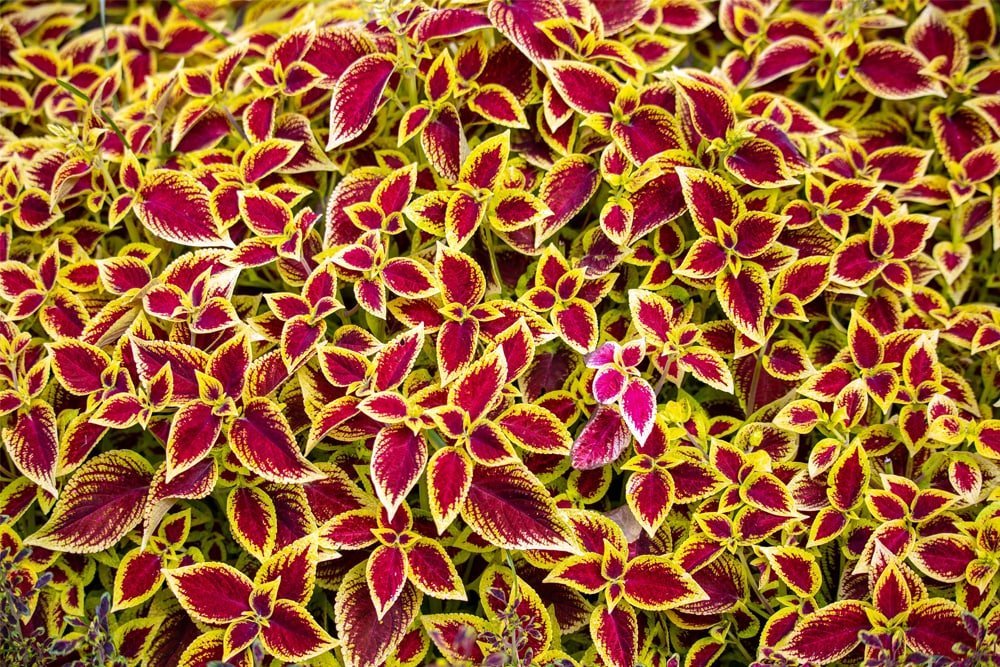
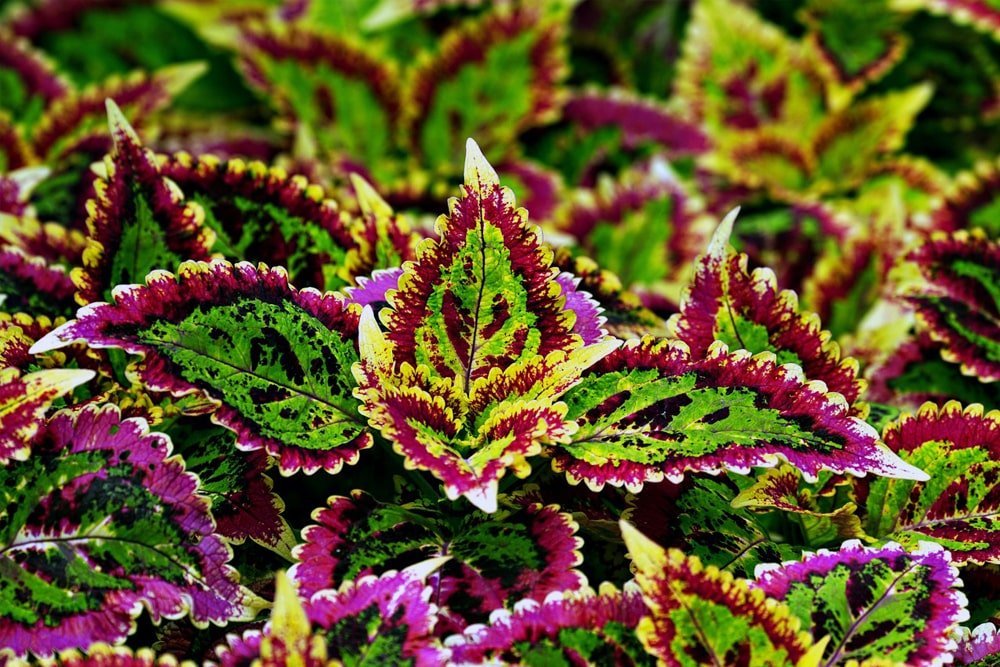

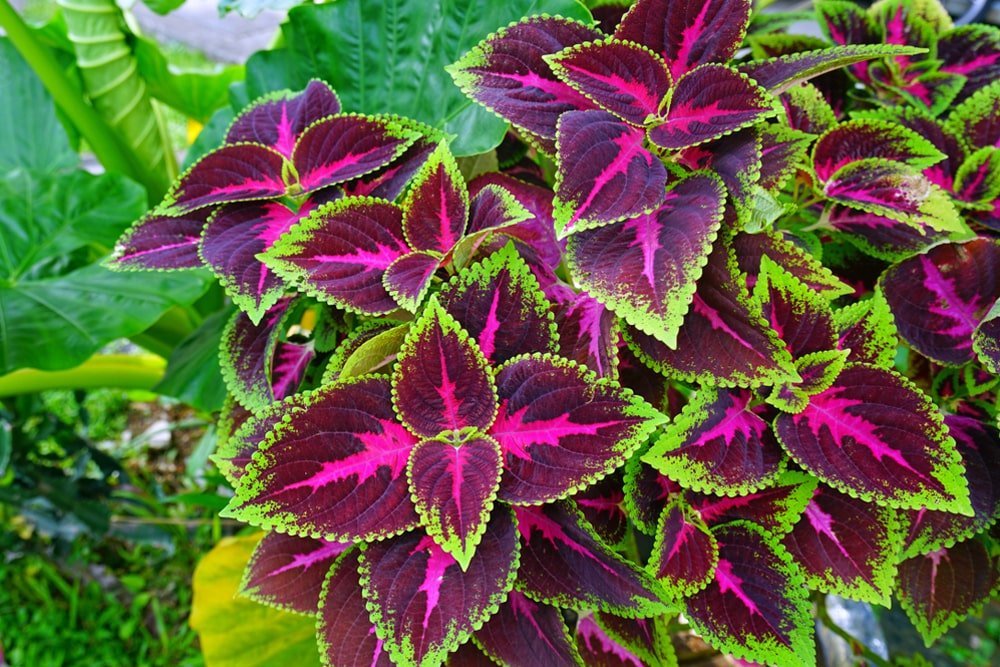
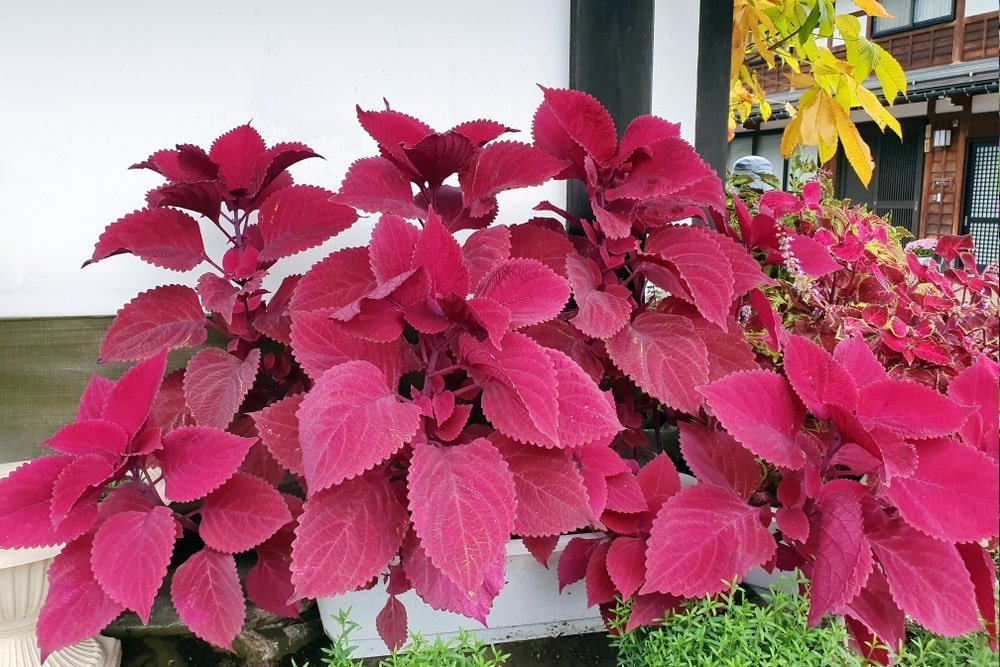
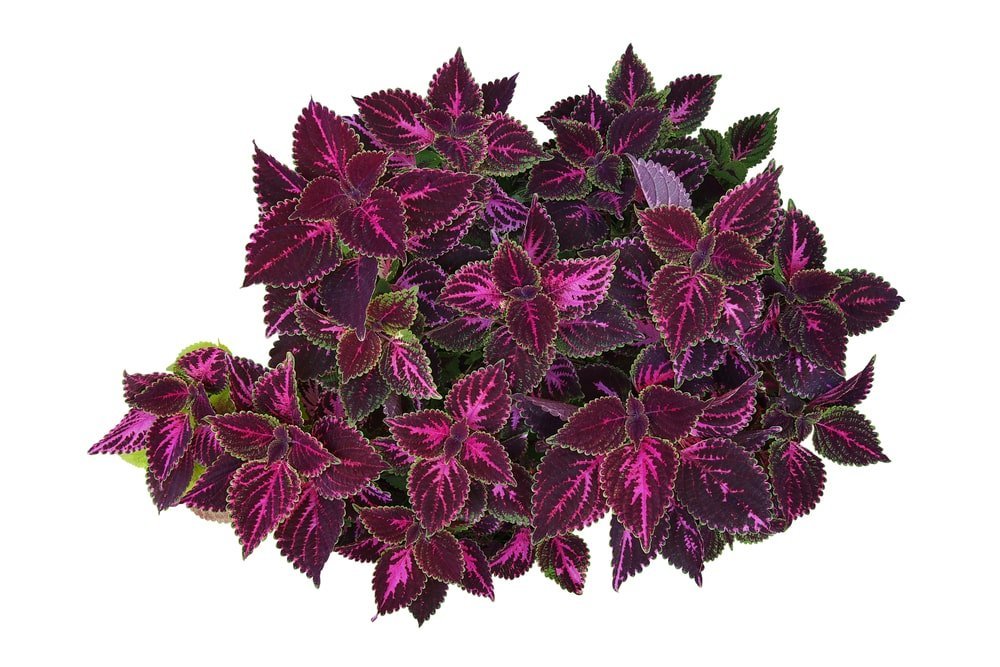
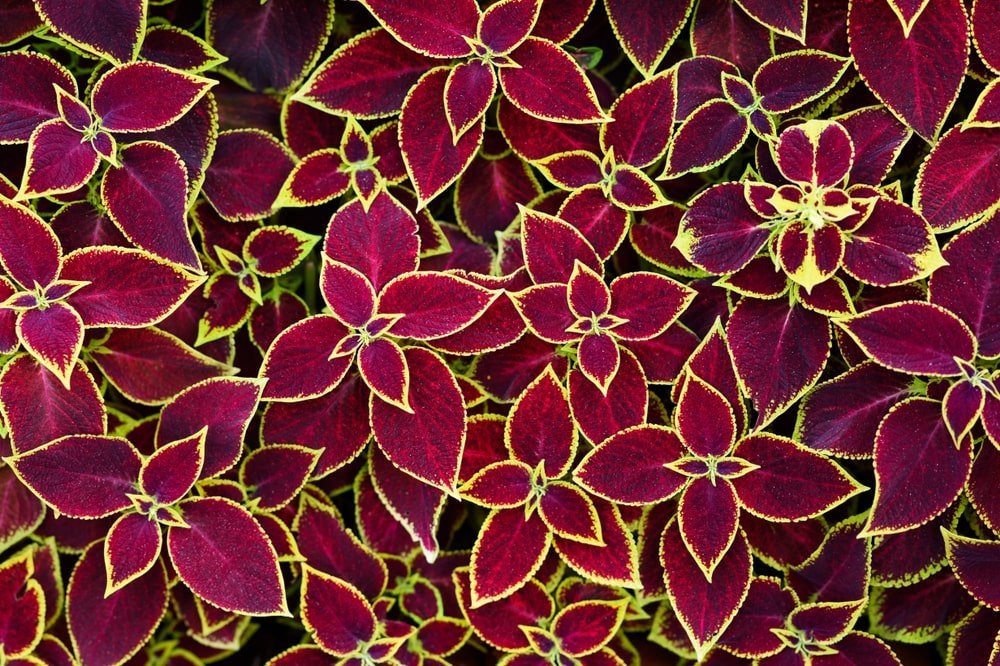
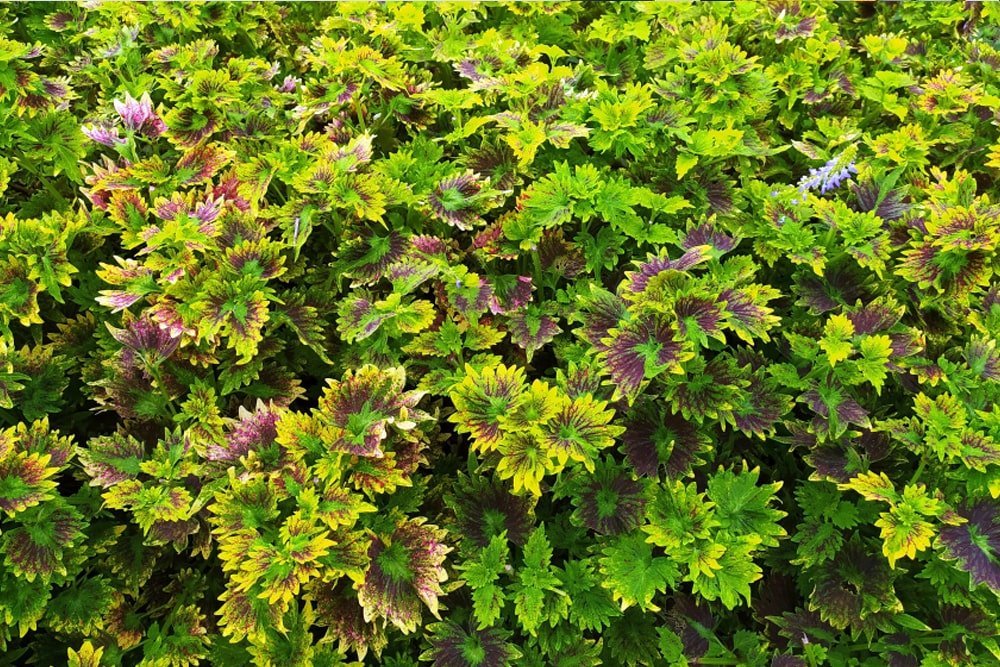

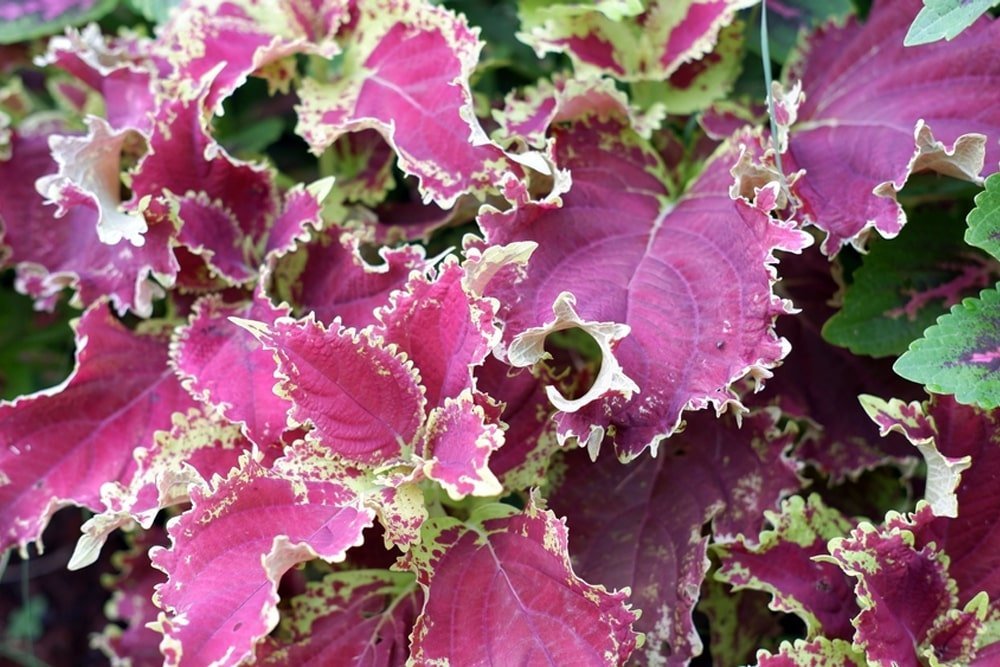

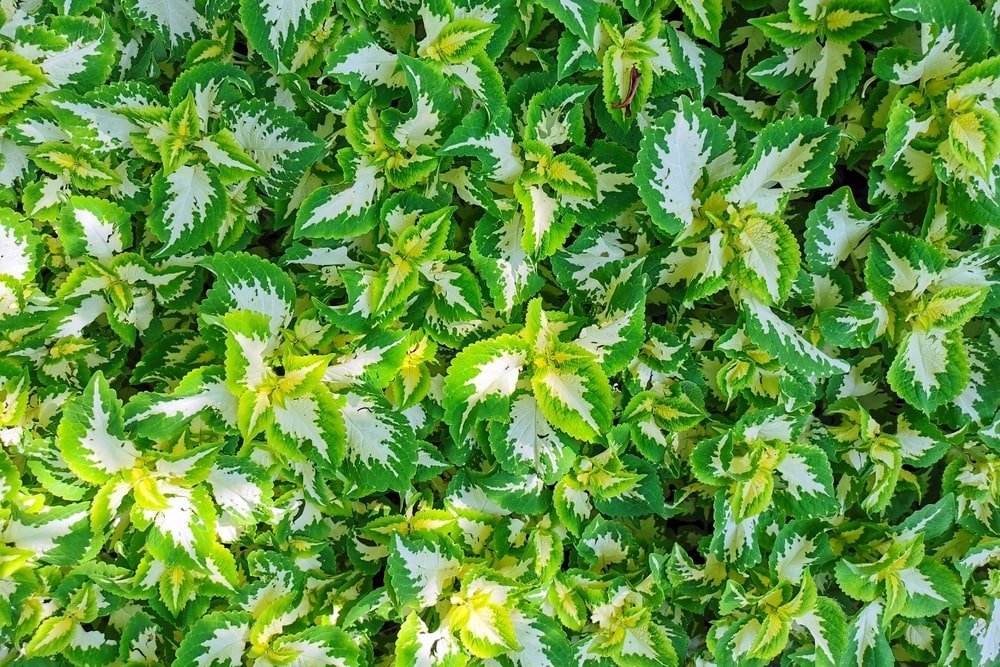
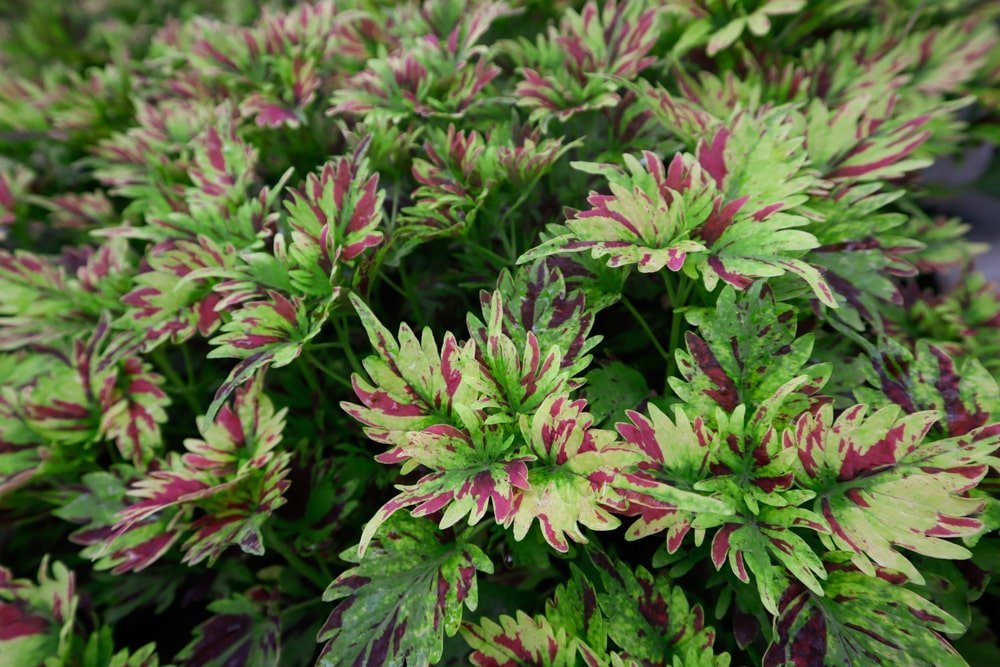
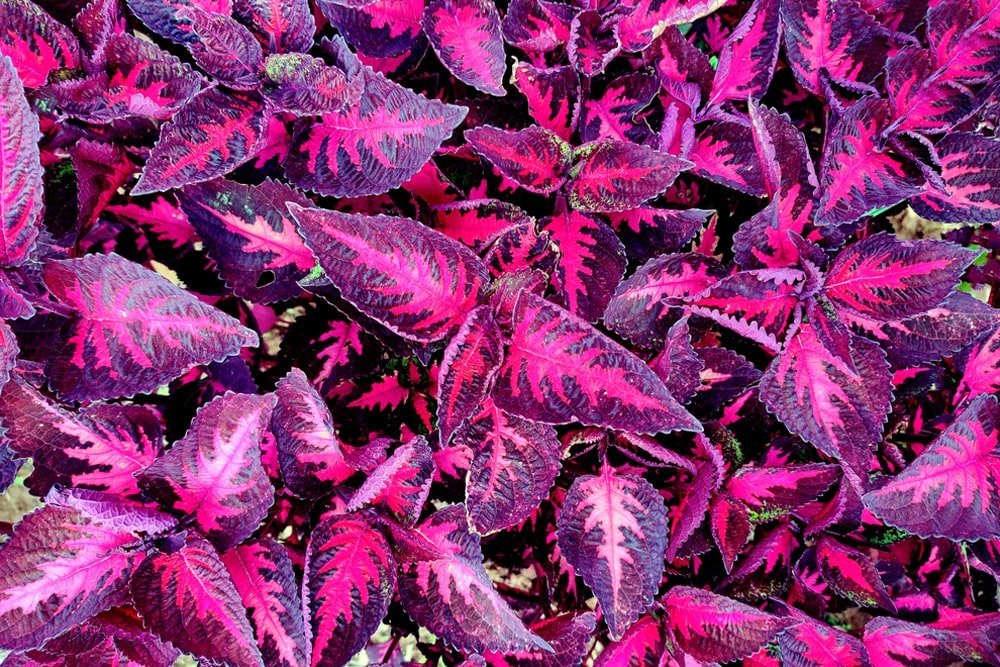
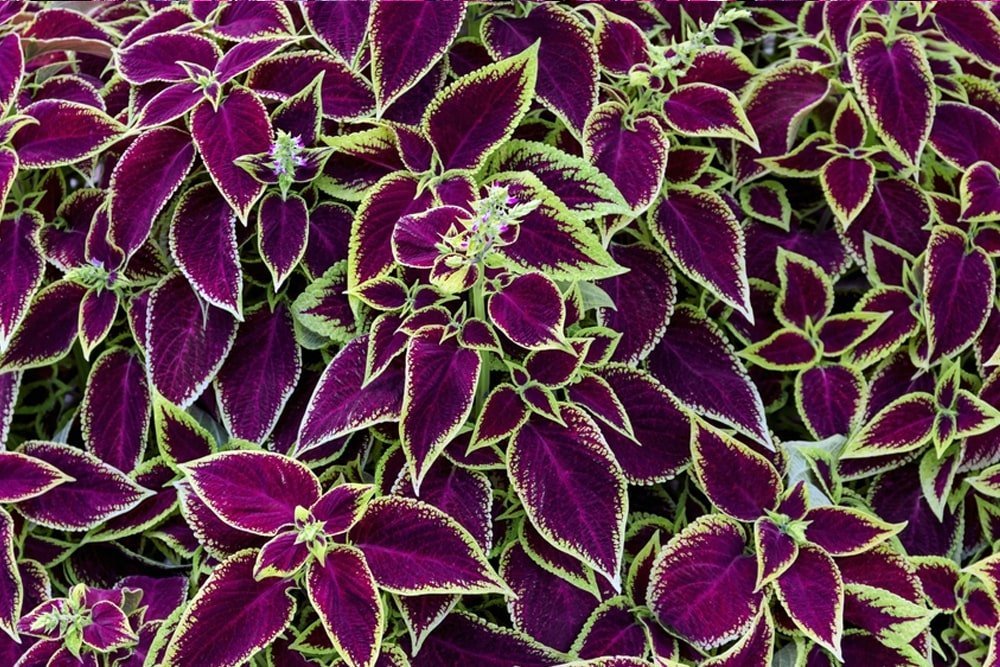



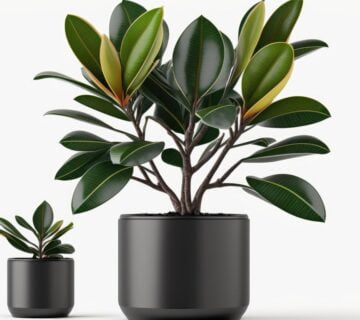
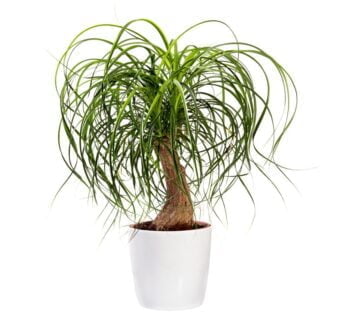
No comment